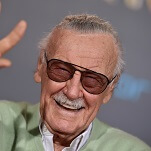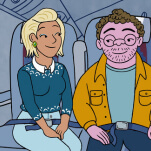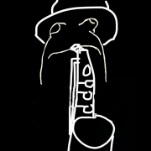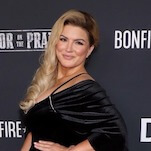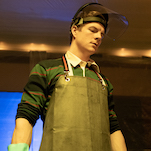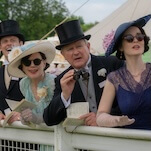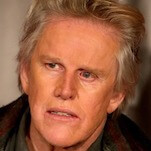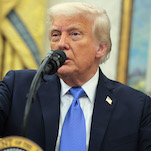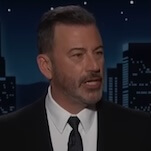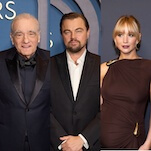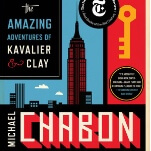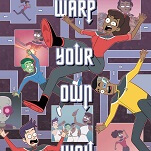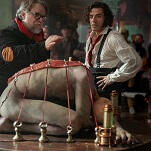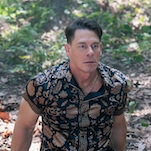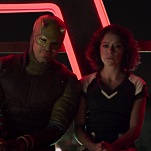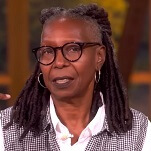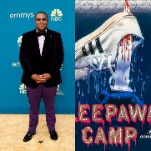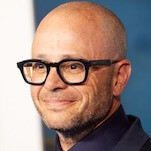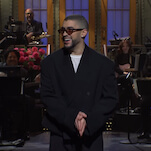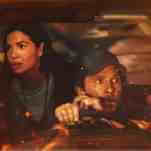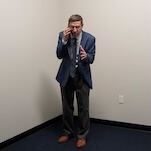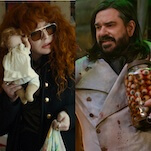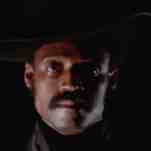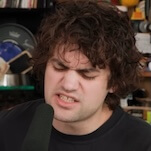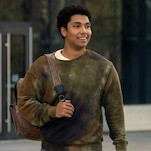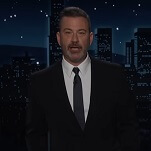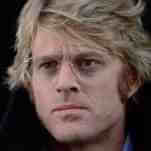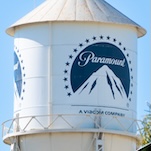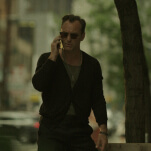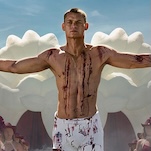The French animation anthology Fear(s) Of The Dark has the standard problem of
collected-shorts programs—variable quality among the entries—and it
adds in a new one: Some of the longer pieces are sliced into segments and
interspersed throughout the program, robbing them of some of their impact. In
particular, Marie Caillou's staccato ghost story about a Japanese schoolgirl, a
dead samurai, and a creepy doctor ends abruptly and oddly, but it isn't clear
until the credits roll that it isn't going to continue. And Pierre di Sciullo's short, in which a woman drones on wearily
about her fears while the screen fills with abstract, mutating shapes, doesn't
actually resolve until partway into the credits. The program's theme is
phobias and nightmares, and the pieces that run
uninterrupted—particularly Charles Burns' talky segment about a shy
student unfortunately drawn equally to insects and women, and Richard McGuire's
wordless short about a man who takes shelter in a dark house—are
naturally more effective at developing eerie worlds drawn from dark fever
dreams.
While the uninterrupted pieces fare better, almost all of Fear(s)
Of The Dark's
entries boast remarkable visual and sound design, with weighty shadows,
complicated texturing, or unsettlingly fluid movement (in the insects of the
Burns piece, or the evil spirits of Caillou's story) pushing at the traditional
boundaries of animation. A simple sequence by French comics artist Blutch,
visualizing a wicked old man walking four vicious attack dogs, boasts a
remarkably detailed scratchy pencil look. The McGuire piece has a simple, sharp
design, but uses light, shadow, and sound to terrifying effect, as his
protagonist blunders around in a darkness that rarely yields to his pathetic
light sources, and even then sometimes only reveals enough to make things
worse. All the segments are in sharp, stylish blacks, whites, and grays, though
Caillou's look more like blues.
Fear(s) Of The Dark isn't a ragtag assembly of pre-existing shorts. The
pieces were commissioned for this project, and they share a quality familiar to
readers of French comics: a combination of sophistication, ennui, dread, and
resignation that has little to do with the American idea of a horror movie.
These stories are frightening, but they contain few shocks or flinches; they're
deeper and more psychological, more about adult anxiety than pure terror.
They're more likely to impress animation buffs than scare horror fans, but
around Halloween time, adults are likely to appreciate scary entertainment with
more on its mind than a simple, shallow "Boo!"

